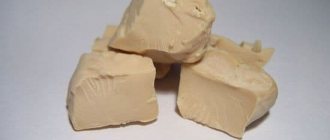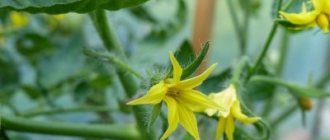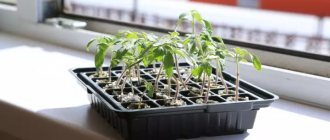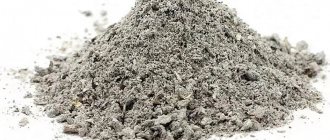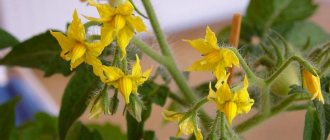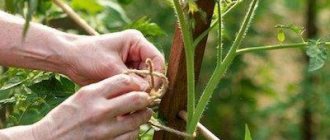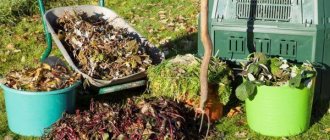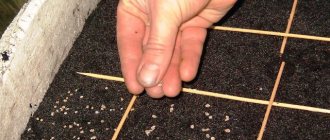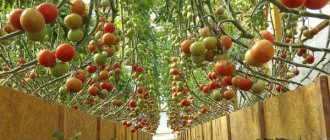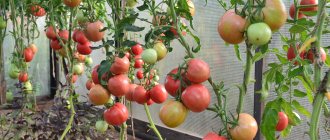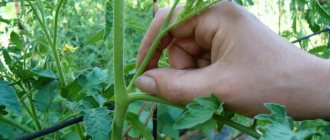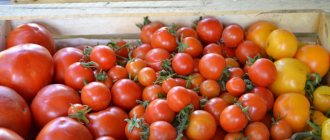Tomatoes require regular fertilization during their growth and development.
This is the key to plant health and a bountiful harvest. Dear readers!
For you, we have created communities on social networks in which useful articles and interesting ideas are published several times a day! Subscribe and receive useful content in a convenient format! Nowadays there are many different types of fertilizers. Some people prefer to use mineral fertilizers, while others trust only organic matter that has been proven over the years.
In our article today we will talk about feeding tomatoes with yeast. You will learn popular recipes for preparing compounds, rules for applying fertilizers and available contraindications.
How to use yeast for tomatoes
Yeast
The use of the most common yeast as a fertilizer began in Soviet times, when there was not such a variety of fertilizers on the market. The use of yeast provides the plant with a sufficient amount of useful and micronutrients and has a beneficial effect on the immune system.
Beneficial features
Yeast-based fertilizer has a beneficial effect on plants of any age. Its effect is most noticeable on young seedlings. Yeast:
- accelerate growth;
- increase immunity;
- promote lush flowering;
- increase productivity.
Also, such fertilizer allows seedlings to quickly take root in a new place after picking and planting in open ground or a greenhouse.
INTERESTING. In terms of its effect on young seedlings, yeast can be compared with complex mineral fertilizers.
In addition to plants, yeast fertilizer has a beneficial effect on the soil. Microorganisms in the soil are stimulated, the processes of mineralization and the formation of beneficial carbon dioxide are enhanced.
BY THE WAY. Another important advantage of yeast fertilizer is its low cost.
Flaws
The main disadvantage of such solutions is that their beneficial effect appears only in warm weather. That is, fertilizers can be applied from late spring to late summer.
In addition, yeast feeding is completely useless during cold weather. It just won't start working.
Yeast should not be used as a fertilizer more than 3 times, since during the fermentation process it absorbs a lot of potassium from the soil. Therefore, frequent use of yeast nutrition can lead to a deficiency of this element.
Advantages and disadvantages of yeast for tomatoes
Yeast fertilizer for tomatoes is an invaluable source of beneficial vitamins, micro- and macroelements, as well as amino acids.
In terms of effectiveness, this product is not inferior to organic and mineral fertilizers. Yeast contains a large number of fungi that affect the organic matter contained in the soil, improving the absorption of nutrients by plants. Advantages of yeast nutrition for tomatoes:
- saturates the soil with nitrogen and phosphorus, improving its structure;
- stimulates the growth of seedlings and accelerates their adaptation to new soil;
- improves the growth of the root system and vegetative mass;
- increases the number of ovaries and fruiting of tomato bushes;
- strengthens the stems of the plant, making them healthy and developed;
- increases the taste characteristics of tomatoes;
- increases the resistance of tomatoes to adverse weather conditions, various diseases and insect pests.
There are several disadvantages to pouring yeast over tomatoes. This solution leaches calcium and potassium from the fertile soil, which plants need for full growth.
Therefore, when using yeast, you need to additionally enrich the soil with mineral fertilizers or ash.
Also, a significant disadvantage of yeast feeding is that when used regularly, it quickly depletes the soil - it ensures rapid growth of tomatoes, but after a year the tomato harvest becomes meager. That is why yeast needs to be alternated with other fertilizers - leaves, grass, straw.
Yeast as fertilizer for tomatoes
Yeast fertilizer concentrate
The greatest effect from yeast-based fertilizers is achieved when used in combination in the form of root and foliar feeding. The result of use is usually noticeable after a few days. Especially on young seedlings. The tomatoes are growing and looking noticeably stronger.
When feeding adult plants, the formation of ovaries accelerates, the fruits fill and ripen faster.
This effect is achieved for the following reasons:
- yeast contains many trace elements, proteins, vitamins and amino acids;
- Yeasts are essentially fungi that contribute to the processing of organic matter and the formation of substances beneficial to plants.
REFERENCE. To enhance the effect, experienced gardeners advise pre-fertilizing with organic fertilizers. In this case, 10-14 days should pass between the addition of organic matter and the addition of yeast.
Fertilizer application methods
Yeast feeding of tomatoes can be applied in two ways - root and foliar. In the first case, the soil around the plant is irrigated with the prepared solution. In this case, there is no need to water the soil directly under the stem - it is best to irrigate the soil near the bushes with the solution using a watering can. Thanks to this, the soil is saturated with useful micro- and macroelements, which are absorbed into the plant.
With the foliar method, the foliage (internal and external parts) and stems of the plant are sprayed with yeast fertilizers. When applying the solution in this way, it is very important to maintain the correct proportions of the components. An increased dose of yeast can cause serious burns to tomato foliage.
Foliar application of yeast is most effective when fertilizing newly transplanted seedlings. It helps to saturate young bushes with useful substances without damaging the fragile structure of the seedlings.
Feeding tomatoes with yeast is a simple, safe and effective way to improve plant growth, ensure their active development and high productivity. Timely application of such fertilizers will increase the resistance of tomatoes to diseases and protect against pests.
Popular recipes and how to prepare solutions
To enhance the action of yeast, complex fertilizers are prepared on their basis. Below are recipes for the most popular and effective solutions.
With ash
Most often, yeast is mixed with ash, which is a source of potassium. The effect of using such a solution is to increase the volume of the harvest and improve the taste of the fruit.
Recipe:
- Mix 10 liters of water, 10 g of dry yeast, 0.5 liters of ash, 3 tablespoons of sugar.
- Infuse for 3 hours in a warm place.
- Dilute the concentrate in a ratio of 1 to 10 with warm water.
With sugar
Yeast fertilizer with sugar
Sugar is a source of glucose, and, therefore, energy for the growth of tomatoes.
Recipe:
- Mix 10 liters of water, 10 g of yeast, 2 tablespoons of sugar.
- Infuse for 3 hours in a warm place.
- Dilute the concentrate in a ratio of 1 to 5 with warm water.
With nettles
Recipe:
- Mix 1 bucket of finely chopped nettle, 0.5 kg of crackers, 0.5 kg of yeast, 70 liters of water.
- Leave for 2 days.
- Water at the root.
With milk or whey
Recipe:
- Mix 0.2 kg of yeast, 1 liter of milk (whey).
- Leave in a warm place for 3 hours.
- Dilute the concentrate in a ratio of 1 to 10 with warm water.
With hops
Preparation of yeast fertilizer with hops
Recipe:
- Pour 1 cup of hop cones into 1.5 liters of boiling water.
- Cook for 1 hour over low heat.
- Cool and strain the broth.
- Mix the broth with 2 tablespoons of sugar and 2 tablespoons of wheat flour.
- Leave in a warm place for 2 days.
- Grind 2 potatoes and add to the infusion.
- Leave in a warm place for 1 day.
- Dilute the concentrate in a ratio of 0.2 l to 10 l of water.
With chicken droppings
Chicken manure is a source of phosphorus, one of the main nutrients in the plant diet.
Recipe:
- Mix 0.5 kg of litter, 0.5 kg of ash, 0.01 kg of yeast, 5 tablespoons of sugar, 10 liters of water.
- Dilute the solution in a ratio of 1 to 10 with warm water.
Methods for pitching yeast in a greenhouse
Now you know all the popular recipes for preparing yeast fertilizers. In addition, I will tell you what is better to use for root watering and what for foliar spraying.
Root feeding
The first root watering is indicated for tomatoes at the seedling stage. For young plants I dilute the following solution:
- For 1 liter of water – 100 g of fresh yeast.
- I insist for a couple of hours.
- I dilute the mixture with regular water to 10 liters.
I use the composition on the same day. As soon as the first signs of fermentation appear in it, it is better not to use it for seedlings - such a mass is only suitable for adult plantings. Yeast feeding will help young seedlings form strong stems and develop evenly without stretching.
The second root feeding is after moving to the greenhouse. Use the same recipe for seedlings, or you can prepare the following compositions:
- Traditional yeast. For 1 kg of wet yeast - 5 liters of heated water. I stir the mixture and let it sit for 1-2 days. After the characteristic smell of sourdough appears, I dilute the liquid with warm, settled water 1:10. Depending on the size, I pour 0.5-1 liters of fertilizer under each bush.
- Yeast with sugar. For 3 liters of warm water – 100 g sugar, 100 gram yeast briquette. I stir, cover with a lid, and take it to a warm place to infuse until fermentation begins. For root watering, I dilute 200 ml of concentrate in 10 liters of water. One bush requires up to 1 liter of composition.
- From dry yeast. For 10 liters of warm water – 10 g of powdered yeast, 2 tbsp. spoons of sugar. The older the tomatoes, the longer I insist on fertilizing - from several hours to several days. Don’t forget to dilute the concentrate with water 1:5 before watering.
At the same time, following the general rules of root fertilization:
- Before fertilizing, I water the plants thoroughly with warm water and loosen the damp soil.
- To feed tomatoes I use liquid fertilizer at room temperature.
- I plan the procedure for the evening hours, after sunset.
I carry out root feeding without any special frills - I try to carefully pour the liquid under the stem, without splashing it on the tops.
Foliar feeding
If the main purpose of root watering is fertilizer, then the task of foliar watering is natural protection from pests and infections. Yeast treatment is an effective prevention of late blight. For these purposes I prepare the following composition:
- For 1 liter of warm milk (replaced with whey) - 100 g of wet yeast.
- I insist for several hours.
- I add regular water to a total volume of 10 liters.
- I add 30 drops of iodine to the working composition and stir.
- I pour the liquid into the sprayer and carefully process the tomato bushes from bottom to top.
I plan the treatment on a cloudy day or evening hours to avoid burning the leaves. For greenhouse tomatoes, two such feedings per summer are enough - before flowering and before fruiting.
Foliar feeding is more indicated for young plants at the seedling stage. Their important advantages:
- Through capillaries, nutrients quickly enter the “body” of the plant.
- Yeast feeding strengthens the seedlings - the stem becomes powerful and lush green foliage appears.
- When applied foliarly, useful components are absorbed in a larger volume, since they are not washed out into the layers of the soil mixture, where the roots can no longer reach them.
- More economical use of fertilizer.
For foliar application, use all the recipes I listed above, but with an important condition: I reduce the concentration by 2-3 times. I carry out the treatment using a regular sprayer, slowly - it is important to moisten both the stem and the foliage on both sides.
The best time to fertilize is a cloudy day or evening. Drops of liquid in the sun cause burns. Moreover, the fertilizer dries quickly before it has time to be absorbed. If the plant is already planted in the greenhouse, plan the procedure for early morning.
How to prepare a solution for feeding
Preparing fertilizer is not too difficult. But you need to adhere to a few basic rules.
- Yeast must be mixed with warm water to activate its action.
- Fertilizer concentrate must be infused in a warm place so that it begins to ferment.
- The prepared solution most often needs to be filtered before use. Especially in the form of foliar feeding.
- Yeast fertilizer only works in warm weather.
- Top dressing is not stored for long and loses its beneficial properties over time.
- Yeast feeding works best together with other ingredients (ash, chicken manure, sugar, etc.).
- Fertilizers are best applied to moist soil.
Pros and cons of yeast feeding
In addition to the above beneficial properties of yeast fertilizers, they are environmentally friendly fertilizers. Tomatoes grown in this way should not cause any particular allergic reactions. In addition, the cost of using yeast as a fertilizer for tomatoes is affordable for almost anyone.
This fertilizer has virtually no contraindications. You just shouldn’t use it more than three times during the entire growing season.
On the other hand, since yeast is to some extent a source of microorganisms that improve the growth and development of any plants, they can be used to feed not only tomatoes, but also peppers, cucumbers, cabbage and other garden crops.
Dosage and stages of fertilizing in open ground
Feeding tomatoes with yeast
You need to water tomatoes with yeast fertilizer at the rate of 1 liter per plant. For large bushes you can increase the volume to 2 liters. It is very important to maintain proportions when preparing the solution.
There should be 3 yeast dressings in total.
First stage
10-15 days after planting tomatoes in the ground. At this time, we help the tomatoes take root better in their new location and stimulate the growth of stems and leaf development.
Second phase
15-20 days after the first feeding. The tomatoes have already grown, and we stimulate flowering and fruit set with yeast feeding.
Third stage
When the first ovaries appear on plants. The purpose of this feeding is to give the tomatoes additional energy for fruit formation. In addition, yeast has a positive effect on the taste of tomatoes.
Yeast dressing with wood ash
The most popular and one of the best recipes for organic feeding of tomatoes and cucumbers remains fertilizer based on yeast and wood ash. In its classic form, in addition to the main components, only water is used. Alternative recipes involve additional additives in the form of: hydrogen peroxide, nettle, onion peel or superphosphate. The choice in favor of one of the components is made on the basis of soil fertility, the state of the crop and the time of development. Very young seedlings, after being planted in a greenhouse or an open bed, are sprinkled with yeast supplements with onion skins. Growing up at the moment of flowering (budding) - nettle. During the formation of fruits and ovaries - hydrogen peroxide. One to two weeks before collection - a solution based on iodine or cinnamon.
It is better to use your own ash for feeding. It can be obtained from branches of fruit trees, after barbecuing or burning in barrels. Cucumbers and tomatoes respond best to plum and apple ash.
It is recommended to dilute yeast and ash with hot water. When choosing foliar feeding, before refueling the sprayer, water is passed through gauze so that particles cannot clog the holes, making the equipment unsuitable for further use in the garden.
Important!
You can use ash-based fertilizer until mid-July. It is better if the product is applied in spring or June. At the time of active growing season, the crop better perceives the useful elements necessary for the full formation of the bush and fruits.
How to do foliar feeding?
Foliar feeding involves spraying tomato leaves. Typically, this method is used when urgent application of fertilizers is required. The solution is quickly absorbed by the leaves and acts immediately.
Foliar feeding with yeast
Foliar feeding is carried out according to the following rules:
- The concentrate must be further diluted twice more in the same proportions.
- Spraying should not be carried out in sunny and hot weather.
- In greenhouses and greenhouses, spraying is carried out in the morning.
Application procedure
Gardeners have tested different recipes for fertilizing starters:
| Raw materials used | Recipe | Working fluid output | Method of application |
| Dry yeast | Yeast – 1 packet (10 g); sugar – 2 tablespoons; water – 10 l (infuse for 3 hours) | Dilute the infused mash with water in a ratio of 1:5 (for 10 liters of concentrated starter, 50 liters of water) | Water seedlings and rooted plants after transplantation |
| Raw compressed yeast | Yeast – 1 kg; water – 5 l (infuse for 2 hours) | Use for feeding adult plants by watering the soil at a distance of 10-15 cm from the stem | |
| Raw compressed yeast | Yeast – 200 g; sugar – 2 tbsp. spoons; water – 1 l | At the end of fermentation, dilute with water in a ratio of 1:10 | Use for foliar feeding by spraying on the leaf |
Both raw and dry yeast are used to prepare sourdough.
Water the soil under the tomatoes using a watering can with a fine strainer. The working fluid is carefully poured at some distance from the barrel.
To feed greenhouse tomatoes with yeast, I prepare mash in advance. I take 100 g of granulated sugar and live yeast, place it in a three-liter bottle, and fill it up to the hangers with slightly warmed water. I leave it warm for 3-4 days, sometimes for a week. For watering, I measure 100 ml (half a glass) of mash into a 10-liter watering can. I pour the resulting liquid over the tomatoes directly over the leaves. This kind of feeding can be done at least every 2 weeks. I try not to bleed soil microorganisms, so I use yeast about once a month, alternating them every 2 weeks with “green” fertilizers, applying manure, chicken manure, and other organic matter (see → types of manure and their use as fertilizers + reviews).
Host of the video channel “House in the Village” Olga Kovalenko
Features of feeding seedlings
Tomato seedlings are fed with a yeast solution after picking. Fertilizer will allow plants to better tolerate the transplantation process and take root in a new place. In addition, in this way we stimulate root formation.
No other elements are usually added to yeast fertilizer for seedlings. Watering is done at the root.
When foliar feeding, the solution is filtered and further diluted with water.
IMPORTANT! To feed seedlings, yeast does not need to be allowed to ferment. That is, you simply mix them with water and immediately treat the tomato seedlings.
Recipes for feeding tomatoes with yeast
You can use ordinary and inexpensive yeast, such as baker's yeast, for feeding cucumbers, tomatoes and other crops. The answer to the question “how to prepare fertilizer for cucumbers and tomatoes from yeast” is not difficult; there are many ways to do this. Here are the most popular recipes for yeast fertilizers, which have received recognition from most specialists and experienced gardeners:
Composition No. 1 – traditional (classic) recipe
- 10 liters of warm water,
- 10 grams of dry yeast,
- 2 tablespoons sugar.
The resulting mixture is infused for 2...3 hours, after which it is diluted in the proportion of 1 liter of mixture to 5...6 liters of water. Instead of dry yeast, you can use raw yeast, as long as it does not expire.
Composition No. 2 – recipe for complex feeding (with sugar, infusion of chicken manure and ash)
- composition No. 1 – 10 liters,
- 500 grams of wood ash,
- 1 liter of chicken manure infusion.
Leave for at least 5 hours, then dilute each liter of the resulting solution with 5...6 liters of clean water.
In this feeding, the infusion of chicken manure acts as chemical mineral fertilizers (ammonium nitrate or urea), and from the ash, when infused, elements vital for the plant, such as potassium, phosphorus and calcium, are transferred from the ash into an aqueous solution, and in the most easily digestible form.
There are other recipes for yeast supplements, the effects of which are approximately similar to those given. In particular, instead of ready-made yeast, you can use bread, hops, etc. for the fermentation process. However, the two recipes presented are quite sufficient for organizing both root and foliar feeding of plants.
If you replace dry yeast with live yeast, what should be the ratio between them?
One teaspoon of dry yeast is approximately equivalent to 10 grams of compressed live yeast.
To properly plan the rotation of fertilizing, we will additionally provide recipes for non-yeast formulations, the use of which will be advisable during special phases of tomato development.
How to feed tomatoes with yeast in a greenhouse
Fertilizer application for tomatoes growing in a greenhouse follows the same pattern as in open ground.
The first feeding is carried out 10-15 days after planting the seedlings. The second - after another 15-20 days. The last feeding is carried out when the first ovaries appear on the plants.
IMPORTANT! Foliar feeding of tomatoes in a greenhouse is best done in the morning. This is necessary so that the tomato leaves have time to dry during the day. At night the temperature drops, and moisture on the leaves can provoke a fungal disease.
Feeding tomatoes with yeast: timing
Before fertilizing seedlings with yeast, you need to take into account the timing of fertilization, otherwise such treatment will not bring any results. Fertilizing tomatoes with yeast can be done already at the seedling stage, when the first green leaves appear on the sprouts - 7 days after planting young plants in open ground.
No less effective is the application of yeast fertilizer to heated soil in a greenhouse 2-3 days before planting seedlings. During this time, fungal microorganisms will begin to process and improve the structure of the soil, saturating it with nitrogen, phosphorus and other useful substances.
Frequency of use of yeast nutrition for tomatoes:
- Repeated application of fertilizer is carried out after the tomatoes have been planted, fully established and rooted. To do this, the plant is watered with yeast diluted in water near the trunk.
- The third fertilization with yeast is carried out already during the period of budding and formation of inflorescences.
- Spraying the stems, leaves and flowers of a young plant is best done in the first half of the growing season.
- Treatment is not carried out during fruiting of tomatoes. They have already absorbed all the substances they need for active growth.
- When processing seedlings, you will need no more than 500 ml of yeast solution. For “adult” plants – up to 1.8-2 liters.
- Tomatoes should only be fertilized with fresh yeast solution. The addition of a fermented mixture negatively affects plant growth, accelerating their aging.
It is best to treat tomato bushes with yeast in the evening, after sunset, or in cloudy weather. Thanks to this, you can protect the tomato leaves from the solution quickly drying out and causing sunburn.
If plants are grown in a greenhouse, they need to be processed early in the morning, before sunrise. This will allow the foliage to dry completely by evening and maintain an optimal moisture balance.
Fertilizers containing yeast
Fertilizers containing yeast
The effectiveness of yeast fertilizers has not gone unnoticed by the agrochemical industry.
EM preparations work on the same principle as yeast . These are special compositions with microorganisms, the action of which is aimed at improving nitrogen fixation, preventing plant diseases, increasing the productivity and taste of fruits.
The most popular fertilizer in this group is Baikal EM . Now it can be purchased at any hardware store. Therefore, if you do not want to prepare yeast fertilizer yourself, but want to get the effect of its use, you can use this drug or its analogues. Other EM concentrates include “Vostok EM”, “Gumat EM”, “Emiks”, “Emochka”, etc.
Important nuances
To get the maximum benefit from fertilizing tomatoes with yeast, you should take into account some features of such fertilizing.
- It makes no sense to use yeast on organically poor soil. It is first necessary to apply manure, compost, and other organic fertilizers.
- In cold weather, the vital activity of the yeast mycelium is suppressed, and the fermentation process is suspended. Fertilizing should be carried out when the soil is sufficiently warmed up, and to prepare the starter, use only heated (not lower than +35ºC) water.
- It is not recommended to fertilize dry or waterlogged soil with yeast.
- Accidental contact of yeast starter with a plant can cause burns to the leaf blade, so after root feeding, the tops should be watered with clean water. Find out also → how to use tomato tops as top dressing + reviews.
- In between using yeast, you should regularly loosen the soil under the tomatoes to prevent the formation of a hard crust.
After yeast root feeding, the tomato tops are watered with clean water.
Contraindications for using yeast
Despite the fact that yeast is a practically safe fertilizer, it still needs to be used carefully.
Firstly , due to yeast, there is less potassium in the soil. Therefore, if your tomatoes lack potassium, then fertilizing should be postponed.
Secondly , for foliar feeding, yeast fertilizer is diluted in an even weaker concentration. This is necessary in order not to “burn” the tomato leaves.
Thirdly , yeast fertilizers are used only in warm weather. Otherwise, fermentation processes will not be activated.
Fourthly , you should not feed yeast to tomatoes suffering from fungal diseases. It will be much more useful to treat such plants with fungicides.
Recommendations for adding yeast fertilizers
For the benefits of yeast fertilizers for tomatoes to be obvious, you need to follow some recommendations from experienced gardeners (Figure 8).
The growth of the bushes will be active and the harvest will be plentiful if you consider the following:
- Root watering is carried out only on moderately moist soil. In soil that is too wet, yeast can provoke the development of fungal diseases and you will have to spend time treating them, but in dry soil the beneficial properties of the substance will simply not be revealed.
- It is recommended to water in the morning or evening so that the moisture does not evaporate, but penetrates deep into the soil.
- During their life, yeast consumes a lot of calcium, so wood ash must be added to the soil along with it.
- The irrigation solution must be fresh, as it loses its beneficial properties during storage.
Figure 8. The solution should be applied to moist, but not too wet soil
. In addition, it is not recommended to exceed the dosage or frequency of watering, as this can lead to the opposite effect and depletion of the soil.
Possible mistakes
- Too frequent fertilizing. Seeing the results of applying yeast fertilizer, you may be tempted to feed your tomatoes with yeast too often. But you can’t do that. The optimal number of feedings is 3 for the entire season.
- Preparation of the solution in cold water. Yeast needs warm water or other liquid to begin fermenting.
- Applying fertilizer in cold weather. Everything said above applies to this point. Yeast only works in warm conditions.
- Too concentrated solution for foliar feeding. When spraying tomatoes with yeast fertilizer, the concentration must be reduced. To do this, the prepared solution is diluted at least 2 more times.
Recipe for making fertilizer at home
Fertilizer can be prepared from both dry and classic yeast. In their absence, fertilizing is prepared from rye crusts, pre-soaked with water, or from pre-sprouted wheat.
Tomato fertilizer is prepared quite simply from pressed yeast.:
50 grams of the substance are diluted in a liter of warm water.
- Add 2-3 teaspoons of sugar.
- Cover with a cloth and leave for several hours, then stir.
- The finished infusion is poured into a standard 10-liter bucket of warm water, mixed well, a half-liter jar of sifted ash is added and infused again.
- Before use, the resulting solution is diluted with clean water in the ratio of a liter of product per 5 liters of water.
It is even easier to prepare top dressing from dry yeast, since it dissolves more easily in water and begins the reaction faster.
- A 10-liter bucket of warm water will require a bag of dry matter, 3-5 tablespoons of granulated sugar and a glass of sifted ash.
- The resulting solution is infused for several hours, after which it is filtered and diluted in the ratio of a liter of infusion to 10 liters of water.
- The resulting fertilizer can be used to water both seedlings and adult transplanted bushes - carefully distributing it using a watering can around the plant.
To enhance the effect, you can add organic fertilizers to the resulting infusion - mullein, humus, extract from chicken droppings. There is no need to get carried away with this type of fertilizer - just one watering of the seedlings at the stage of formation of young bushes, one when transplanting plants into a greenhouse and open ground, and one more when setting buds.
Advice : Yeast fertilizer must be prepared and applied immediately; it cannot be stored. The soil must be well heated and warm, otherwise fertilizing will become useless.
Foliar fertilizer for tomatoes
Yeast fertilizers are mainly fed to plants in the standard way - by adding them to the soil . The effectiveness of foliar feeding is not very high, but a couple of times a season you can spray the bushes of already well-established tomatoes with ready-made fertilizer - this will saturate them with the necessary microelements and protect them from potential pests. By adding a little more sifted ash to the solution, the effectiveness of foliar feeding will increase. More options for foliar feeding can be found here.
In the greenhouse
The use of yeast fertilizers for tomatoes in a greenhouse is very effective. The soil there, as a rule, warms up well, and fungi act more efficiently. To maximize yeast fertilization, it is recommended to add compost, mulched straw or grass to the greenhouse in the spring.
The more organic matter in the greenhouse soil, which fungi will process from yeast, the healthier and stronger the tomatoes will be. Since the soil in a greenhouse is warmer than in open ground, you can prepare an infusion without first keeping it for a long time - let it sit for an hour and a half and use it.
When watering tomatoes with yeast solutions, do not apply them directly under the stem - use a watering can to water as large an area around the bushes as possible so that the soil is thoroughly saturated with the mixture. This way the efficiency will be much higher.
FAQ
Preparation of yeast fertilizer concentrate
Why do you need to feed plants with yeast?
Yeast is a source of many vitamins and minerals, as well as a growth stimulant. Using them as fertilizer improves plant health and stimulates growth. Yeast is also good for the soil.
How to properly prepare fertilizer from yeast?
Yeast is diluted in warm water and left to ferment. This produces a concentrate, which is then diluted with water and the tomatoes are treated with the resulting composition.
What to do if the plant gets worse after feeding it with yeast?
Feed the tomatoes with potassium and calcium compounds and next time reduce the concentration of the yeast supplement.
How long can yeast nutrition be stored?
Fertilizer should be applied immediately after preparation. Every day it will lose its beneficial properties. If you don’t have a lot of tomatoes, then adjust your feeding schedule in such a way as to treat not only tomatoes, but also other vegetables.
Why didn’t fertilizing give any results?
Firstly, you may simply not see the external result. This happens especially often when processing mature plants. Secondly, you need to apply yeast fertilizer only in warm weather. When it's cold outside, this feeding will not work.
What is yeast feeding
First, you need to decide what baker's or baker's yeast is, and it is about them that we will talk, how they live, what they eat, and how they can be a plant food. Yeasts are single-celled fungi from the Saccharomyces family that do not have mycelium and live in liquid and semi-liquid substrates rich in organic matter.
Please note that yeast lives in liquid and semi-liquid substrates, which soil is not. Moreover, they are quite demanding in terms of nutrition, consuming fats, carbohydrates and organic acids. But compounds found in the soil such as cellulose or lignin, which are the remains of plant stems, are inaccessible to them.
All this suggests that the soil is far from their habitat and they will not be able to live there for a long time. They will live longer in moist and organically rich soil, and will die immediately in dry and poor soil. So why are they so praised and what is the use of them?
I hope I won’t make a discovery for anyone if I say that yeast doesn’t eat tomatoes. They eat only the waste products of yeast, which in turn eat organic matter in the soil. But not only plants consume yeast waste products; the entire soil microcosm participates in this process. By introducing such fertilizing, we thereby activate the entire microflora, and it is as if a small storm of food chains is sweeping through the soil - some eat others, their excretory products serve as food for others and protect them from fourths.
As a big plus of all this, the metabolites of all this vital activity become available to plants as food. What they previously could not absorb from the soil, after feeding with yeast, it is given to them like dinner on a silver platter.
Of course, yeast, in the process of its life activity, consumes a lot of what is in the ground. For example, there is an opinion that they deplete the soil by drawing potassium and calcium from it. Yes, these elements are required for their nutrition, but they do not put it away and after their life they will also become someone’s food and all the elements will remain where they were, i.e. in the soil. Adding ash to yeast nutrition can serve as additional nutrition for them if these elements are not enough in the soil. And if you also take into account that the lifespan of yeast in the soil is very short, and does not exceed one day, then they will extract very, very little from the soil.
Yeast needs nitrogen and phosphorus in much larger quantities, but for some reason no one talks about this. Experienced moonshiners will support me; in order for the mash to ferment well, for every kilogram of sugar you need to add 2 grams of ammonium sulfate and 3 grams of superphosphate. Or, as an alternative, 4-5 grams of rotted chicken droppings or 1 ml of ammonia for every 2 liters of mash.
After the end of its life, the yeast will also become food. And this is very good food. For example, they contain 12% protein, the decomposition of which releases quite a lot of nitrogen, which is precisely a good nitrogen supplement. Therefore, the main purpose of yeast in the soil is to die there. Not right away, but that’s their fate.
And since a lot of nitrogen is released after them, it becomes clear when such fertilizing is recommended and when not.
Reviews about the effectiveness of yeast
Olga : “Last summer I conducted an experiment with yeast on tomatoes.
I watered one bed in the open ground twice over the summer with yeast starter, and left the neighboring one for control. I noticed a difference already 3 days after feeding. The plants in the control bed looked paler, and after a week there was a clearly noticeable difference in growth. By the end of summer, signs of late blight appeared on both beds, but the degree of damage to plants treated with yeast was lower. As a result, the harvest from the experimental bed was 1.5 times greater than from the control bed. This year I’m already confidently feeding all the tomatoes with yeast, not only in the open beds, but also in the greenhouse.” Rate the quality of the article. We want to be better for you:
Useful tips
In order for yeast to work for the benefit of the plant, it is important to follow several rules:
- Before fertilizing, check the condition of the soil. It should be slightly damp.
- The optimal time for watering is early morning and evening.
- Yeast absorbs calcium. To replenish its level, add ash under the tomatoes.
- Water only with fresh, warm solution. The longer the mixture sits, the less useful substances remain in it.
- It is better to water the root of the plant with fertilizer made from yeast and sugar, not the leaves.
- Do not increase the amount of fertilizing. Stick to the correct dosage.
- Manure and poultry droppings reduce the beneficial effects of yeast. Instead, it is better to add ground egg shells, ash, tops or hops.
If you follow all the recommendations and rules for preparing yeast fertilizer, young shoots will turn into strong and healthy tomatoes.
It will be difficult not to notice the effect of this type of feeding.
